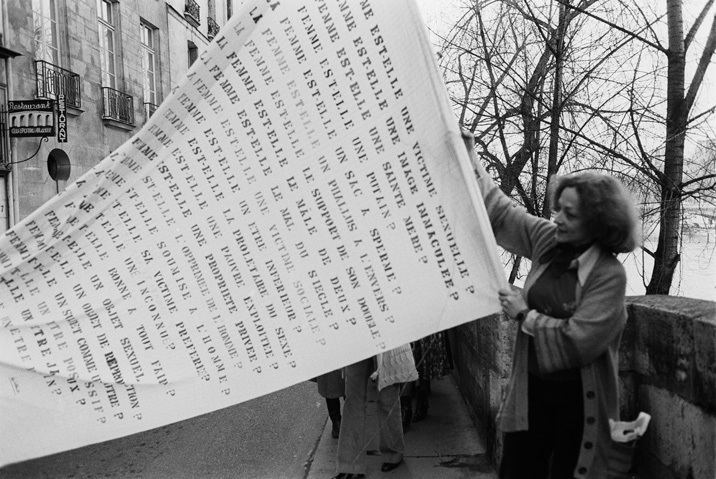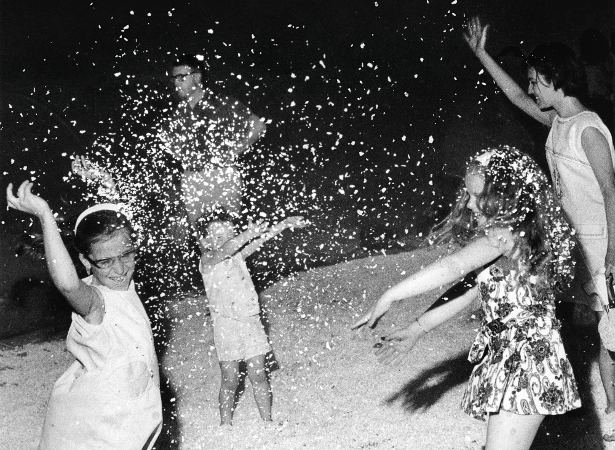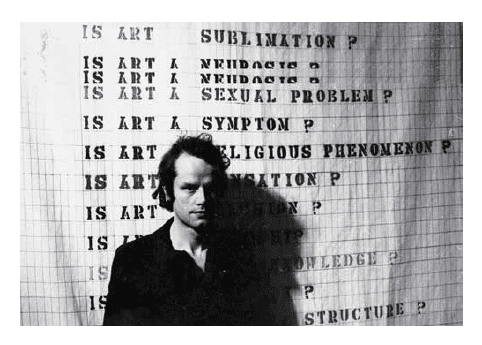Full Name Lea Lublin | Name Lea Lublin | |
 | ||
Known for Painting, performance, video Notable work La memoire de l'histoire rencontre la memoire de l'ordinateur (1985)L'ange de Piero della Francesca (1980)Le corps a-mere, l'objet perdu de MD (1995)Six peintres sur ordinateur (1985)La memoire de l'histoire rencontre la memoire de l'ordinateur - 1 (1985)La memoire de l'histoire rencontre la memoire de l'ordinateur - 2 (1985) Education Instituto Universitario Nacional del Arte (1941–1949) Awards Guggenheim Fellowship for Creative Arts, Latin America & Caribbean | ||
REPORTAJE LEA LUBLIN
Lea Lublin (born 1929, Brest, Poland, died in 1999, Paris, France) was an Argentine-French performance artist. Her involvement with feminist movements and themes included the WACK! Art and the Feminist Revolution in Los Angeles in 2007.
Contents
- REPORTAJE LEA LUBLIN
- Exposicin de Lea Lublin en el CAAC Sevilla
- Early life
- Career
- Works in collections
- Literature
- References

Exposición de Lea Lublin en el CAAC (Sevilla)
Early life

Lea Lublin emigrated with her family to Argentina in 1931 and grew up in Buenos Aires. There she attended classes at the Prilidiano Pueyrredón National School of Fine Arts from age 12 on and graduated in 1949. Lublin began her artist life as painter, but in mid-1960 after her move to Paris, she began her interest in exploration of new media and materials. This interest lead her to cooperation with Centro de Artes Visuales of the Institute Torquato di Tella, an Argentinean center for experimental and avant-garde art.
Career

Lublin's work investigates imagery, often searching for what may not have yet been seen within imagery that is otherwise familiar. Her work has been influenced by psychoanalysis and feminist thought.

Lublin activated her works, often encouraging the viewer to interact with the work. For example, she mounted glass over painted reproductions of famous, iconographic paintings such as the Mona Lisa and installed windshield wipers onto the glass. The audience was invited to squirt water on the painting, which would be cleared again by the wipers.

Large-scale Installation art works followed. Lublin immersed viewers into the work, using made-to-specs inflatable tubes and objects, as well as black light and dark rooms or heaps of tiny plastic balls in which audience members could sit and cover themselves.

Lublin also created performance art sometimes called "exhibition-performances." In "Mon fils" (1968), she participated in the respectable May Exhibition in Paris by taking her baby son to the museums during the regular exhibition hours and exhibiting him and herself by doing the normal care of changing diapers, breast feeding and putting her son to sleep in his bed that she had brought with them. This brought public attention to social and gender roles in her work. She continued performances of this kind in Argentina and Chile until the end of the 1960s. Her next work the "Terranauts" (1969) was deeply influenced by French feminism. Lublin eventually moved permanently to Paris, where she worked and lived until her death in 1999.
In her work, Lublin left behind the flat canvas that she had used as painter and became part of the movement of the 1960s that used art as a means for involved active social dialogue. Lublin supported the division on art and the life, building on Borges' belief that art is a form of breathing. And her stand in it was feminist, involving the audience, critical but open for different receiver's groups.
Starting in the 1970s, Lublin tended to present her work in public rather than inside museums. She asked questions to passers by originally regarding art and later about the role of the women. Lublin also put provocative questions on large cloths, hoisted like flags to attract attention. By setting up closed circuit TV cameras nearby, she gave contributors the air of speaking as pundits on TV, breaking with role expectations and their own personal experience.
Beginning in the 1980s and until her last works in the mid 1990s, Lublin returned to interacting with iconographic works, particularly Renaissance paintings. She deconstructed the imagery of these paintings by, for example, removing the child from different paintings of Madonna with the child. This work explored the role of the baby and his mother in paintings created by male painters. Following psychoanalytical patterns, she identified the painter with the child looking for an eroticized image of the mother in the works or otherwise revealing sexual undertones in Christian imagery.
When Lublin briefly returned to her former home Buenos Aires in 1989, she investigated Marcel Duchamp's stay in the city from 1918 to 1919. Lublin got access to Duchamp's former apartment and noticed that both the old windows and the still mostly original colors of some walls matched those of Duchamp's iconic 1920 work Fresh Widow which he made after returning to Paris. Lublin also discovered that the female alter ego Duchamp used after 1920, Rose Sélavy, matched advertising in a Buenos Aires newspaper that he was known to have read. When she left, she stole the dilapidated letter box from Duchamp's former apartment and exhibited it later, recalling his Readymade works. Lublin's interactions with Duchamp continued when she deconstructed the Rose advertising as well as his famous pissoirs in several of her own works, shifting them into a dispute with feminist statements. One of these was titled Le corps amer (à mère), l'objet perdu de M.D., shown at Femininmasculin at Beauborg in Paris. This piece consisted of a large, transparent skirt, stomach, and breasts with a urinal inside.
Lublin is considered to be part of the same generation as artists Lygia Clark and Allan Kaprow.
Works in collections
Her works are in the collections of Museum of Modern Art in New York, the Centre national des arts plastiques, the Fonds régional d’art contemporain Alsace, and the Bibliothèque nationale de France.
The vast majority of the existing works are in her estate, administrated by Nicolas Lublin in Paris. In 2015 the Lenbachhaus, in Munich, Germany hosts the first ever retrospective, drawing heavily on the estate and works from several museum collections.
